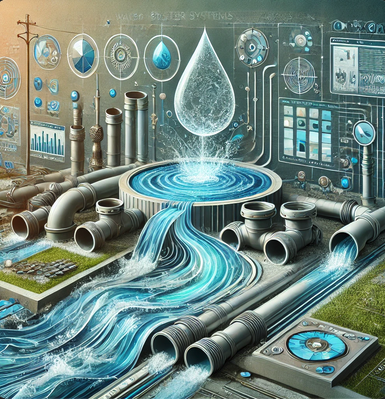31. Sanitary Sewer Guidelines#
Course Website
Readings#
Videos#
Sanitary Collection Systems#
Introduction#
Collection systems, or sewers, are essential for gathering wastewater and delivering it to a common destination. This can be a treatment facility for sanitary wastewater (sewage) or a direct outfall into a receiving stream for stormwater.
Importance of Collection Systems#
Collection systems play a vital role in controlling water quality by managing potential non-point source discharges and converting them into manageable point discharges.
Sewer Types#
Categories of Sewer Systems#
Sanitary Sewer Systems: Collect and transport wastewater to a treatment plant for further processing.
Storm Sewer Systems: Collect and direct stormwater to a receiving water body, addressing nuisance flooding and improving infrastructure serviceability.
Combined Sewer Systems (CSS): Designed to handle both sanitary and stormwater. These are no longer built in the USA, but older cities maintain legacy systems.
Common Features Across Sewer Types#
Hydraulics: Open channel flow.
Components: Pipes, boxes, junctions, and lift stations.
Purpose: Sanitary systems protect public health by isolating waste, while storm systems manage nuisance flooding and may also confer water quality benefits.
Sanitary Sewer Design#
Characteristics#
Underground pipelines collect and transmit sewage from distributed sources to a central location.
Operate as open channels driven by gravity.
Require lift stations to maintain flow in certain areas, with the pumped flow conveyed through force mains before returning to open flow.
Governing Regulations#
Federal, state, and municipal laws dictate materials, joints, labeling, and more.
Designs often require the involvement of a licensed professional engineer (PE).
Hydraulic Behavior#
Sewage behaves like water but may contain up to 5% solids by mass.
Design concerns include corrosion and safety for maintenance personnel.
Example Code for Hydraulic Analysis (Placeholder):#
# Placeholder for hydraulic calculations
import numpy as np
# Define pipe parameters, flow rates, and more here
Sewage Quantity#
Estimation Methods#
Small residential areas: Based on population or equivalent residential units (ERU).
Larger areas: Derived from land use, anticipated population, and measured flows in similar nearby systems.
Flow Calculation Requirements#
Include average dry weather flow, peaking factors, and inflow/infiltration.
Account for immediate post-construction and end-of-life (50 years) conditions.
Design Flow Equation#
[cite source] A representative design equation for a residential unit is:
\( Q = X \times (1 + B) \)
Where:
\( Q \): Flow in gallons per day
\( X \): Per capita wastewater production
\( B \): Number of bedrooms
Example Code for Flow Estimation (Placeholder):#
#```python
# Placeholder for flow estimation
population = 500
per_capita_waste = 70 # gallons per day
number_of_bedrooms = 3
flow = per_capita_waste * (1 + number_of_bedrooms)
print("Estimated flow (gpd):", flow)
#```
Estimated flow (gpd): 280
Additional Requirements#
Ensure sufficient capacity for future populations, including institutional and industrial flows.
Design to prevent pipe surcharges at peak flows.
Modeling Sewers in SWMM#
Collection systems in SWMM are modeled similarly to stormwater systems.
Components like reactors, sumps, and pumps can be modeled for hydraulic analysis within a treatment plant.
